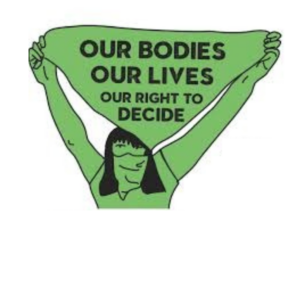Adam Smith
Adam Smith preceded Malthus, and through him, we can see how Malthus altered the discussion of wages and poverty. In The Wealth of Nations (1776), Smith puts forward the first coherent bourgeois understanding of the nature of the capitalist economic system. The theory of wages articulated by Adam Smith recognised that unemployment was part and parcel of the capitalist system; specifically, the level of employment depended on the accumulation of capital to set labour into motion and the techniques of production in use. Techniques of production used by capitalists depended on the wages and rate of profits, the level of output needed given the demand for the commodities and knowledge of available techniques themselves, which is taken as known by capitalists.
In terms of wages, Smith argued that there was a historically and socially determined level of subsistence wages, which depended on the recognised needs of the society that workers and their families required to produce and reproduce their class. This is important; Smith argued that this subsistence level of wages was the floor to which wages could sink and that they were socially determined. This was not conceived of as a biological subsistence level, so if there was a temporary crisis (e.g., short-term harvest failures, drought, famine), the market of wages (wages earned in the labour market) could fall a bit to the biological level, but could not be eroded further and that the historical subsistence level would be restored once the crisis ran its course.
Smith also argued that economic growth and the use of technology lead to the increased productivity of labour, which could mean that workers would be able to get higher wages above the subsistence level (this means that the natural level of wages – the average level of wages paid – would rise above the subsistence level of wages) and if it persisted, the subsistence level of wages and the commodities now consumed would increase as this would be recognised by society as the new subsistence wage bundle and level of commodities.
T.R. Malthus
Essentially, Malthus argued for a new theory of poverty, opposing the idea that it resulted from the insufficient accumulation of capital to employ workers and the lack of stability in the capitalist system. Instead, it was the actions of the poor themselves that created their poverty. According to Malthus, subsistence wages (strictly biological subsistence wages or the theory does not work even in its inane logic) are determined by the supply (level of the working population) and the demand (the capital available for the employment of labour) for labour.
So, Malthus argued two fundamental points. The only way to impact workers’ wages was to operate on these two things. The labour supply had to be constrained, or capital accumulation needed to increase. Malthus does not believe in birth control (note the Reverend in front of his name and that he is writing in the late 18th and early 19th centuries; unfortunately, some things do not change). Positive constraints (excepting birth control) mean that workers are less dissolute and overwhelmed by their inherent sexuality (this is probably the early basis for the sexual abstinence nonsense we have seen from right-wing Christians for the past 30 years). This way, population increases and employment more closely match increases in capital accumulation.
James Mill
James Mill further developed this discussion on capital accumulation in the last edition of Elements of Political Economy, arguing that it was easier to increase population than capital. He was the first to say that capital derives from capitalists abstaining from consumption (the beginning of the abstinence theory of capital) and hence was difficult to increase – yes, it is nonsensical, but it became a significant point to justify the right of capitalists to earn profits and still exists in modern economic theory with a beautiful mathematical model to sustain the ridiculous argument where capital becomes “deferred consumption”.
Returning to Malthus’s principle of population and labour supply, according to Malthus, attempts to alleviate the poverty of the working class were doomed to failure because if you increased wages by redistribution, for example, or an exogenous increase in wages, workers would breed uncontrollably and increases in population would force wages back to the biological subsistence level (never mind that it takes time for children to grow up to be used as workers, figure 7 years at that time as children did work which would mean if the economy continued to grow, there would be no problem with insufficient levels of capital).
This is called Malthus’s “Iron law of Wages” – subsistence wages are biologically determined, and we cannot change them. The addition of the theory of differential rent, of which Malthus was a foremost exponent although not the inventor, allows Malthus to add another constraint. According to Malthus’s version of the theory of differential rent, the amount of fertile land that can be used for the production of agriculture is limited by nature; as such, increasing the amount of the agricultural output is limited to an arithmetic increase as we are forced to use lesser and lesser fertilities of land for agriculture production. Since humans cannot control their inherent need to breed, if there is an increase in food production for workers’ consumption, workers will continue to multiply; Malthus argues that population increases rise geometrically.
That means (according to the “Dirty Reverend,” as Marx calls him) that human population increase will outstrip the ability of agricultural production to satisfy needs, which leads to the negative constraints on overpopulation (wars, famines, diseases, etc.) that will arise to bring the population (and remember this is the working class) back to consistency both with the biological subsistence level of wages and agricultural production (food). There is much wrong with Malthus’s argument; Godwin, for instance, discusses the methodological problems of Malthus generalising from specific examples. There is also the fact that all demographic evidence is contrary to his predictions; we can see historically that the more income people have, the fewer children they have, i.e. that we do not breed out of control and that incomes are not set at biological subsistence levels unless persistent droughts, famines, etc. occur.
His analysis, although inconsistent with limited or little analytical and historical evidence, served an important role; it naturalised the poverty of the working class rather than putting responsibility on the capitalist economic system where it belongs, and this also had a lasting impact on discussions of overpopulation and the responsibility of the poor for their poverty, obfuscating the truth that the capitalist economic system is responsible for poverty.
Francis Place
The solution to Malthus’s overpopulation nonsense was appended to the theory by the liberal reformer Francis Place, who called for birth control for the “poor” to prevent their “permanent and natural” poverty, which heralded the birth of neo-Malthusianism. This updated theory still places the issue of overpopulation at its centre and stresses the dangers of overpopulation for the planet. It should be noted that Place advocated contraceptives despite fathering 15 children of his own; as such, the problem is the poor having children, not those with wealth and power, despite their working-class origins.
On its own, arguing for access to birth control is excellent as it offers choice to women in terms of if, when and how many children they have. What is oppressive is linking birth control, sterilisation and abortion to coercion, a danger we have found ourselves in repeatedly. Place’s argument was not advocating for all women to have access to birth control; this was explicitly aimed at working-class women to limit their reproduction and prevent poverty. However, poverty is the cause of overpopulation, not vice versa.
Moreover, the historical linkage between the birth control movements in the US and UK and the eugenics movement in the early 20th century reinforced the argument relating the misery of poverty with having too many children; we can see this discussion underlying the sterilisation abuse of poor women (initially poor white women and then women of colour through the social welfare state) and disabled women and also in the linkage of benefits to the use of birth control. That is why we must demand reproductive justice rather than simply reproductive rights.
That has been the basis of eugenics policies used against oppressed and exploited minorities (from indigenous populations to poor white women and disabled people to women of colour, and it is still in use against disabled women). Whenever eugenics raises its ugly head, disabled people take the first hits. This was the case with benefit policy in Britain, with the Nazi genocides, and with the coronavirus pandemic, where disabled people died in far higher numbers than those without impairments in all waves of Covid-19. Now, the Tories have decided to force disabled people once again back into employment to address “the labour shortage” – in their minds, disabled people are “living off the generousness of society without contributing” – the same thing applies to women who cannot access childcare and therefore cannot work.
Social policies that limit the cost of welfare benefits to the state and access to benefits for poor women are the same as social policies linking receipt of benefits to contraceptives and forced sterilisation. State and government eugenics policies already had impacted indigenous women in the US, who were often sterilised after giving birth. The creation of a social welfare state gave the state further access and control over women’s reproductive choices and the possibility of linking this to release from prison, access to birth control and sterilisation abuse.
Unfortunately, this is not just a historical discussion; the contemporary debate on overpopulation and climate change reeks of neo-Malthusianism and places the fault for the planetary climate crisis on the backs of poor women, especially women of colour in the global south rather than on the capitalist economic system which is responsible for the destruction of the planet and the climate. The capitalist financial system needs to be eliminated, not the choices of people who can get pregnant.
The recognition of the right of bodily autonomy for those who can get pregnant, access to contraceptives, abortion and choice, as well as health care (reproductive and regular health care), education, housing, drinking water and having more wage income, will prevent poverty and give people more choices. We want and need options, and blaming and coercing the most marginalised in the global capitalist economy is the last thing we should be demanding.
Austerity and Poverty
It is helpful to explore the use of Malthusian arguments still existent in social policies today, and to do this, I will discuss the social and economic policies of the Tory-Liberal Democrat government and the subsequent Tory government.
During the introduction of Austerity following the 2007-2008 crisis, whose purpose was to push the costs of the Banking crisis onto the working class, the Tory-Liberal Democratic government put a freeze on public sector wages from 2010-2012 unless wages were below £21,000 (public sector wages were higher than in the private sector) and then put a cap of 1% on public sector wage increases lasting from 2013-2017. It was only in 2021 that private sector wages passed the public sector, and then came the pandemic. This impoverishment of the working class was a deliberate policy of the Tory party government.
Iain Duncan Smith
The government also introduced a change in the benefits system, which Iain Duncan Smith pushed forward. The creation of Universal Credit was predicated on the idea that those on benefits were lazy and self-indulgent, didn’t want to work and were taking advantage of the “generosity of the British people” and government and must be forced back to work. As part of the changes in the benefits system, a maximum benefit cap (introduced in 2013) was placed on how much you could receive if you were not employed, and sanctions were used to punish those who refused paid employment. They also introduced a system of workfare (thank you again to the US for this pile of crap), which was essentially treated as training to learn to work and for which you received benefits which are far lower than wages; this notion of less eligibility (which has survived the demise of the Poor Law in the early 20th Century) that those in paid work must receive more than those on benefits comes from Jeremy Bentham and is an essential component of Universal Credit.
The attack on disabled people was powerful, first eliminating the Independent Living Fund and then subjecting disabled people to a series of assessments to ascertain whether they were disabled enough to get benefits. These assessments were conducted by companies whose goal was to get as many off of benefits as possible, resulting in the impoverishment of many disabled people who were able to get benefits again following appeals, but in the meantime, until appeals came through, they had little (if there were saving) or nothing to survive on.
In many senses, Universal Credit had a two-fold target: 1) reduce the spending on social welfare while forcing the “lazy” workers back into work; 2) undermine the social subsistence level of income as the amount received as benefits was below the social subsistence level of income itself. Given the impact of Universal Credit, we can now argue (since it is pronounced) that benefits simply serve as a way to pay workers lower wages, as the benefits system essentially supplements wages. Given the destruction of working conditions due to privatisation and zero-hours contracts used in the private sector, they have created a whole class of the working poor unable to survive on wages and with a limited social net to help when the inevitable economic crisis arrives; this is the race to the bottom justified by the “nature of competition” under capitalism.
Additionally, two special programmes were part of the system, primarily targeting women. In earlier forms of benefits, women were given them, a victory for women’s financial independence and because women ensured that money was spent on children’s necessities. Universal Credit changed this, and the benefit money was given to the highest income earner in the household. Given the lack of access to childcare, women have to work around school hours (if their children are in school) in several part-time jobs; this means that women will not be the highest income earners in the family unless they are single parents. While you can ask that benefits be given to women, this is not necessarily straightforward if you are from a more traditional culture in which men are more dominant, are in an abusive relationship, or are simply uncomfortable or unable to cope well with dealing with bureaucracy.
A second programme that is even more pernicious is the two-child maximum benefit cap introduced in 2017. Despite everyone at the time saying that this policy would lead to an increased level of both relative and absolute child poverty, this policy installed a cap on how much child benefit you could receive (if you were not in work); specifically, only two of your children would be eligible for benefits. This is the case unless your third child was conceived as a part of rape (sound familiar?) or as part of a multiple birth. This appalling programme has led to a massive increase in poverty, especially for larger families. As expected, women have decreased their food consumption to ensure that their children get enough food and necessities, so whole families have been impoverished due to this policy.
A study released in July 2023 on the impact of both the benefit cap and the two-child maximum policy discussing the impact of the two-child maximum on large-size families, As discussed in the Guardian:
The research, published on Monday morning by academics from the Universities of York, Oxford and LSE found both the two-child limit and the benefit cap had failed to meet their own stated aims, having had no positive incentive effect on employment, nor produced a reduction in fertility among poorer families.
The benefit cap, first implemented in 2013, places a cap on the amount a household can receive in benefits if they have no, or low, earnings, with the average household losing £50 a week. The two-child limit was introduced in 2017 – an estimated 32,000 households containing 110,000 children were affected by both policies at the same time in March 2022.
Ethnic minority and larger families were disproportionately likely to be hit by the two-child limit and benefit cap, typically leaving them unable to afford essential items for their children, such as food, clothes and heating, with a consequent negative effect on children’s emotional and physical development, the study found.
Up until very recently, the Labour Party, women’s groups, groups working against poverty, etc. (essentially anyone with a basic sense of morality) have condemned this appalling piece of legislation and called for its elimination; just removing it will relieve child poverty and the poverty of single parent homes immediately. According to the Guardian, the estimated costs of removing the policy will cost £1.3 billion. Now that the Tories are hopefully looking to be on their way out, the Labour Party was expected to eliminate this. It now turns out that this will not be the case; this was announced by both Keir Starmer and Rachel Reeves (the shadow Chancellor of the Exchequer), the excuse being that they do not want to say they will eliminate without know if they have the money given the state of the British economy.
If the most impoverished have enough money to survive (it is shown that they end up £3000 in debt a year in the report), would that not be good for the economy? How does not decreasing child poverty benefit the British economy? There are some obvious ways to cover the cost of removing this appalling policy: a wealth tax targeting those with more than one home and significant amounts of financial assets; a financial transaction tax could also be a good suggestion; another obvious target is to switch subsidies for the fossil fuel industries to cover the costs of eliminating the two-child benefit maximum). It never ceases to amaze me that there is “no magic money tree” until it is needed for wars, covering emergencies, payoffs to corps, etc.
The Cost-of-Living Crisis in Britain and the “battle” against inflation
The cost-of-living crisis in Britain has further undermined wage incomes (i.e., wages + benefits); it is not only the price of fossil fuel and electricity that have risen (and these were the only things that were covered partially and inadequately by the Tory package to deal with rising inflation), it is the price of food, clothing and other necessities that have grown and continue to rise.
The rising prices in the cost of living crisis derive from several things. The primary one is the breakage of supply chains during the pandemic. Additionally, there is the fact that rising fuel prices have led to increasing transport costs (used for distribution of commodities and services) and the fact that rising fuel and energy costs have also increased production costs as it is an intermediate product in the production of most goods. The third cause, which is specific to Britain and is the reason that inflation is continuing to be high, is due to Brexit (which is a continuing problem for supply chains), and the fact that somehow the Tories did not understand is that Britain is not food sovereign; we import large amounts of food consumed in Britain. Tariffs due to leaving the EU will add to costs, and buying food goods from further afield will increase transportation costs. Finally, climate change has impacted food production in Europe and elsewhere, leading to a rise in food prices passed onto the working class.
Moreover, attempts by all Central Banks to address inflation have been in the form of increases in the rate of interest. While this may be an appropriate response to demand-driven inflation, that is, an overheating economy where increasing consumer and business demand drives up prices, and you want to cool off the economy by raising interest rates to encourage savings, it does nothing for inflation that derives from breaks in supply chains.
That requires that the breaks in supply chains that initially caused the crisis (which is then continuing as the fossil fuel industry reaps record profits) are re-established. It will also require caps placed on price increases, which are all going to profits (it is far easier to do that than to directly regulate profits, but profits can be capped or, even better, excess profits taxed at a very high marginal rate of taxation which will reduce incentives for capitalists to increase profitability so high that they fall into a high marginal tax rate). We need to understand that inflation is a direct class warfare between wages and profits; we need to protect workers, not the ruling class — instead, what is happening is the converse.
What increases in the interest rate do is increase the cost of borrowing, which is what most businesses (especially small and medium-sized businesses that do not have capital on hand) run on; they borrow and then pay off when the goods are sold. However, rising costs due to increasing borrowing are passed on to consumers. If it is impossible to pass on to consumers, they will borrow less as the borrowing costs are too prohibitive, meaning there is a decrease in production.
What else runs on borrowing? The housing and rental market. Increases in interest rate mean increases in mortgage payments unless you have a fixed-term mortgage; if these are rental properties, the property owners will increase rents. Even if the mortgages are paid off, they will still try to raise rents to cash in on the price increase. Borrowing to buy a home is more expensive, meaning that people are less willing to take out a mortgage because they do not know how the rates will change, and they want to avoid getting trapped in a fixed-term mortgage. Consumer costs of borrowing loans or using credit cards also increase with rising interest rates. Interestingly, while banks have quickly moved to increase the interest rates on borrowing, they have yet to increase interest payments on money in interest-bearing accounts as quickly (please do not tell me you are surprised!).
As mentioned, interest rate increases aim to cool down a capitalist economy; they encourage savings, not investment. So, they present a greater danger to a stagnant economy (like the British economy) and will not address the causes of inflation because they lead to decreased investment and economic growth, which can lead to a recession. While the British economy is not technically in recession, it has stagnated. Moreover, the long-term wage income stagnation, which was how the costs of austerity were forced onto the working class, has led to the working class again bearing the brunt of another economic crisis.
Wages and inflation UK; up to 2022
You hear on every MSM about the danger of increased wages making inflation worse, and workers are asked not to demand wage increases for the “good of the country”… in other words, for the good of British capitalism. But the working class has little or nothing to give up; their incomes are already too low relative to costs. Prices of necessary consumption goods continue to be high, the working class has nothing left to give up, food banks are in regular use for those in paid labour, and the public sector trade unions continue to strike for better wages (and are still getting below inflation offers), those in private sector employment are mostly non-unionised, those dependent on benefits are in severe crisis as they need to get both higher wages and benefits and once again it is the poorest and most marginalised that are paying for a capitalist economic crisis and being told to do so for their country.
To add to the mess, the Labour Party will not help those in desperate need despite saying they are the party of the working class. Alas, they are more concerned with winning over the right wing in the upcoming election, not serving the interests of the working class. What else is new?
Art (54) Book Review (122) Books (114) Capitalism (68) China (81) Climate Emergency (98) Conservative Government (90) Conservative Party (45) COVID-19 (44) EcoSocialism (56) Elections (83) Europe (46) Fascism (58) Film (49) Film Review (68) France (70) Gaza (61) Imperialism (100) Israel (127) Italy (46) Keir Starmer (54) Labour Party (111) Long Read (42) Marxism (49) Marxist Theory (48) Palestine (174) pandemic (78) Protest (152) Russia (340) Solidarity (145) Statement (48) Trade Unionism (142) Ukraine (347) United States of America (133) War (368)
Latest Articles
- Disabled women and reproductive rights
 Reproductive rights for disabled women involve the right to personal autonomy and the choice over whether or not to have children write Sandra Wyman and Terry Conway. There have been many cases of disabled women being denied that choice – and in particular denied any real choice to have children .
Reproductive rights for disabled women involve the right to personal autonomy and the choice over whether or not to have children write Sandra Wyman and Terry Conway. There have been many cases of disabled women being denied that choice – and in particular denied any real choice to have children . - Palestine, Sudan, and the Global North’s Indifference
 The famines in Gaza and Sudan: Gilbert Achcar examines how they compare and what lessons can be drawn from the world powers’ inaction towards them.
The famines in Gaza and Sudan: Gilbert Achcar examines how they compare and what lessons can be drawn from the world powers’ inaction towards them. - Should there be 100% inheritance tax?
 The debate into a 100% inheritance tax reveals the fault lines of capitalist ideology. Simon Hannah offers a perspective into the scandalous idea of abolishing this form of class privilege.
The debate into a 100% inheritance tax reveals the fault lines of capitalist ideology. Simon Hannah offers a perspective into the scandalous idea of abolishing this form of class privilege. - Meet Chloe: life as a Welsh Trans person in 2025
 The more I talk with cis people on the left, the more I realise how out of touch they are with the realities faced by the trans community. writes Nora Rhiannon.
The more I talk with cis people on the left, the more I realise how out of touch they are with the realities faced by the trans community. writes Nora Rhiannon. - Will New Left party let Farage in?
 Dave Kellaway responds to the argument that the New Left Party will split the progressive vote and allow Farage or a hard right coalition into government.
Dave Kellaway responds to the argument that the New Left Party will split the progressive vote and allow Farage or a hard right coalition into government.

